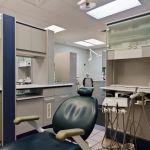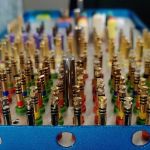- 1-causes-of-persistent-bad-breath-after-dental-treatment-understanding
- 2-common-medical-factors-contributing-to-bad-breath-post-treatment
- 3-oral-hygiene-and-dietary-influences-on-bad-breath
- 4-effective-remedies-for-persistent-bad-breath
- 5-real-case-examples-of-managing-bad-breath-post-dental-care
- 6-professional-support-from-dentistry-toothtruth
1. Understanding Causes of Persistent Bad Breath After Dental Treatment
Persistent bad breath, medically known as halitosis, following dental treatment can be distressing and confusing for many patients. It’s important to recognize that not all post-treatment bad breath is temporary or harmless. Sometimes, underlying issues related to the dental procedure or oral environment cause ongoing unpleasant odors. Commonly, procedures such as root canals, tooth extractions, or implant surgeries can leave behind bacterial buildup, healing tissue, or residual infections that contribute to bad breath.
Additionally, the use of dental materials or medications might alter the mouth’s natural flora, encouraging odor-causing bacteria. Understanding these causes helps patients and dentists address the root problem rather than simply masking symptoms.
1.1 Post-Treatment Healing and Bacterial Imbalance
Healing tissues can produce sulfur compounds and inflammatory exudates that cause temporary odors. However, when healing is prolonged or complicated by infection, bad breath becomes persistent. Dental treatments may also disrupt the delicate balance of oral bacteria, allowing anaerobic bacteria to thrive, which are primarily responsible for foul odors.
2. Common Medical Factors Contributing to Bad Breath Post-Treatment
Several medical factors can exacerbate or prolong bad breath after dental care. Residual infection from incomplete root canal cleaning, abscess formation, or gum disease flare-ups are key contributors. Patients with dry mouth (xerostomia), a common side effect of some medications or dental anesthesia, face reduced saliva flow, which impairs natural mouth cleansing and favors bacterial growth.
Systemic conditions such as diabetes or gastrointestinal issues might also manifest as persistent bad breath that coincides with dental treatment timelines, complicating diagnosis and management.
2.1 Impact of Dental Appliances and Materials
Sometimes, materials used in fillings, crowns, or dentures can trap food particles or create rough surfaces that harbor bacteria. Poorly fitted dental appliances contribute to plaque accumulation and subsequent halitosis.
3. Oral Hygiene and Dietary Influences on Bad Breath
Even after professional dental care, inadequate oral hygiene habits are a major cause of persistent bad breath. Failure to clean around surgical sites, dental restorations, or appliances allows plaque and food debris to accumulate. This accumulation fuels bacterial growth that produces volatile sulfur compounds responsible for foul odors.
Dietary choices also impact breath freshness. High-protein diets, garlic, onions, and alcohol consumption can worsen bad breath. Moreover, insufficient water intake can cause dry mouth, reducing saliva’s natural cleansing ability.
3.1 Behavior Changes to Support Healing and Fresh Breath
Incorporating regular tongue scraping, flossing, and gentle rinsing with antibacterial mouthwash supports oral microbiome balance. Avoiding irritants like tobacco and sugary snacks further reduces risk factors for bad breath.
4. Effective Remedies for Persistent Bad Breath
Addressing persistent bad breath after dental treatment requires a multifaceted approach. First, revisit your dentist or dental specialist to rule out infections or complications that need professional treatment such as antibiotics or additional cleaning.
For daily management, maintaining impeccable oral hygiene with thorough brushing (including the tongue), flossing, and the use of therapeutic mouth rinses is crucial. Saliva stimulants or artificial saliva products may be recommended for those experiencing dry mouth.
4.1 Natural and Lifestyle Remedies
Many patients find relief by increasing hydration, chewing sugar-free gum to stimulate saliva, and avoiding strong-smelling foods. Incorporating probiotics designed for oral health can help restore bacterial balance and reduce odor-causing microbes.
5. Real Case Examples of Managing Bad Breath Post Dental Care
Take the case of Linda, a 45-year-old who developed persistent bad breath weeks after a root canal. After consulting her dentist, she learned that incomplete removal of infected tissue was the culprit. With targeted antibiotic treatment and enhanced home care, her breath gradually improved over two months. Her story highlights the importance of timely professional follow-up and patience during healing.
Another patient, David, struggled with halitosis caused by dry mouth following extensive dental implants. By integrating saliva stimulants, regular tongue cleaning, and dietary changes recommended by his dental care team, David regained confidence and fresh breath within weeks.
6. Professional Support from Dentistry Toothtruth
For those facing persistent bad breath after dental treatment, expert guidance and tailored products are invaluable. Dentistry Toothtruth offers personalized consultations, diagnostic services, and access to trusted remedies designed to tackle halitosis at its root cause. Whether you need specialized mouthwashes, saliva substitutes, or professional cleaning, their experts help craft the best plan for your oral health journey.
Explore more solutions and expert advice at Dentistry Toothtruth to reclaim fresh breath and confidence after any dental procedure. Your journey to lasting oral freshness begins with informed care and the right support.







 Dental Solutions Market Street4.0 (576 review)
Dental Solutions Market Street4.0 (576 review) Mesa Valley Modern Dentistry4.0 (344 review)
Mesa Valley Modern Dentistry4.0 (344 review) Washington Square Dental4.0 (121 review)
Washington Square Dental4.0 (121 review) Gregg W Jepson DMD5.0 (7 review)
Gregg W Jepson DMD5.0 (7 review) Growing Smiles of Voorhees4.0 (2464 review)
Growing Smiles of Voorhees4.0 (2464 review) Metropolitan Endodontics4.0 (78 review)
Metropolitan Endodontics4.0 (78 review) The Importance of Oral Health Education During Pregnancy for a Healthy Pregnancy
The Importance of Oral Health Education During Pregnancy for a Healthy Pregnancy Best Tips for Brushing Your Teeth Properly for Healthy Gums: Essential Techniques for Oral Health
Best Tips for Brushing Your Teeth Properly for Healthy Gums: Essential Techniques for Oral Health Why Skipping Dental Checkups Can Lead to Bigger Oral Health Problems
Why Skipping Dental Checkups Can Lead to Bigger Oral Health Problems Advantages of Porcelain Dental Restorations
Advantages of Porcelain Dental Restorations How Can Diabetes Cause Tooth and Gum Problems? Preventing and Managing Oral Health Issues
How Can Diabetes Cause Tooth and Gum Problems? Preventing and Managing Oral Health Issues Healthy Habits for Promoting Good Oral Health and Hygiene: Tips for a Healthy Smile
Healthy Habits for Promoting Good Oral Health and Hygiene: Tips for a Healthy Smile